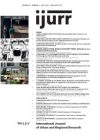In this article, we address the question of the extent to which US producers’ reliance on cheap immigrant labor can continue to retard the march of apparel manufacturing out of the country as garments produced by even cheaper labor overseas flood the US market in the post‐NAFTA period. The article is divided into five sections. In the first, we introduce concepts that are key to our discussion, including the new international division of labor thesis, dual labor market theory, the state’s role in boundary management and the implications of these with regard to industrial development and migration in Mexico and the United States. In the next section, we examine changes in the regulatory regime governing international trade in garments and the subsequent shifts that have occurred in Mexican apparel exports to the United States on the one hand, and in Mexican and US garment employment on the other. In the third section, we review the role immigrants play in the US garment industry and the debates about if and how immigrant workers and entrepreneurs contribute to its international competitiveness. We then turn our attention to a case study of garment production in El Paso, Texas, where thousands of Mexican‐immigrant and Mexican‐American women have lost their jobs as seamstresses since the implementation of NAFTA began in 1994. In the fourth section of the article, we analyze data from US County Business Patterns, the decennial US Census of Population and Housing, the annual March US Current Population Surveys and the US Department of Labor’s records of certified NAFTA‐related layoffs to ascertain the extent to which El Paso’s experience of heavy immigrant garment job losses is typical of the rest of the country. In the concluding section we discuss the implications of our analysis for the future of the US garment workforce.
Details
Written by:
David Spener, Randy Capps
Digital Object Identifier (DOI)
10.1111/1468-2427.00313
About DOI
Read full article as PDF
Read full article as HTML
See the references for this article
